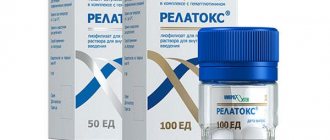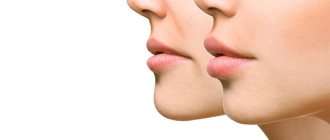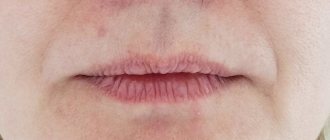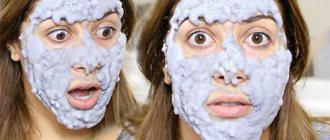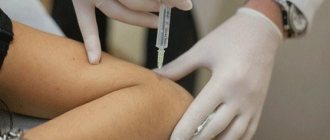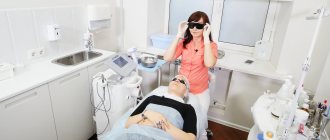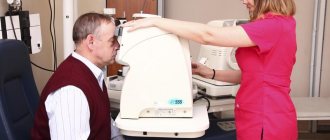Consultation Services Doctors Results Reviews
Expert tested
Sharubina Karina Petrovna Trichologist, dermatovenerologist, cosmetologist
Publication date: November 16, 2022
Review date: November 02, 2022
Cuperosis is a condition characterized by impaired blood circulation in the upper layer of the skin. Blood stagnation leads to thinning of the capillary walls due to the heavy load on them. They become fragile and brittle. Capillaries may periodically burst, and the blood coming out of them will be noticeable under the skin. Most often, rosacea occurs on the forehead, wings of the nose, chin, and cheeks. It is usually accompanied by burning or itching of the skin.
In a more advanced stage, rosacea is characterized by the appearance of a vascular network (telangiectasia) that occurs in the area of capillary damage. Couperosis is the initial stage of circulatory disorders, and rosacea is already a chronic skin disease. 10 percent of our planet's population is affected by this disease. At the same time, the disease is much more common in women, although men are more likely to have complicated forms and rapid development of symptoms.
At the first signs of circulatory problems, you should immediately seek help from specialists. After all, treating the initial stages is always easier than the advanced ones.
Avdeyuk Elena Vladimirovna
Dermatovenerologist, cosmetologist
Signs of development of vascular disorders
Facial redness
This is the initial stage of vascular disorders, which is called erythrosis. Occurs under certain circumstances and provoking factors. Sometimes it appears for no reason. The wings of the nose, cheeks and chin are most prone to the onset of the disease. The sensitivity of the skin in these areas increases and it becomes red. A sick person complains of fever, itching, and tingling. This state can last from a couple of minutes to two hours. This skin pathology on the face can spread to the neck.
Constant redness
In problem areas there is already a constant state of redness of the skin. Spider veins and stars begin to appear, as well as pigmentation.
This condition is similar to a flush or sunburn that does not go away.
Skin changes
The skin becomes thinner, dries out, and has a grayish color. Inflammation begins in problem areas, sometimes they become covered with a rash. The disease progresses gradually and its third stage without treatment occurs 20-30 years from the onset of the pathology.
Causes of the occurrence and development of rosacea
Before starting therapy aimed at curing rosacea, it is advisable to find out what could have been the impetus for its occurrence, that is, dilation of blood vessels and loss of elasticity. As a rule, there are two main reasons: hereditary predisposition and motivating external factors.
The mechanisms of inheritance of the disease have not been established, but studies conducted by American scientists have proven that in 40% of cases the disease occurs in close relatives of patients.
But if heredity is difficult to change, then you need to pay special attention to external factors and, if possible, try to avoid them. Or minimize it. Such negative external factors include:
Frequent consumption of alcoholic beverages. Red wine has a vasodilating effect on the skin. This negatively affects the skin of the face.
Eating very hot or spicy foods, which leads to capillary fragility.
Sudden temperature changes. People should avoid prolonged stay in an area with an aggressive climate and avoid temperature changes. This is when, for example, a well-warmed person (after a bath or intense workout) plunges into cold water.
Ultraviolet rays also have a negative effect on the skin. Direct sunlight or prolonged stay in a solarium destroys the capillaries on the surface of the face.
Aggressive products. These include hot chocolate and coffee. They increase blood flow to the surface of the face.
Stress, emotional swings, nervous breakdowns. They increase blood pressure and negatively affect blood vessels.
There are also a number of diseases that provoke changes in blood vessels. These include: diseases of the gastrointestinal tract, especially the stomach and duodenum (they are observed in 90% of patients with rosacea); endocrine diseases; disruptions in the immune system; disorders in the blood coagulation system; vegetative-vascular dystonia; skin infections.
On the severity of the disease in men and women
Such a diagnosis as rhinophyma is typical mainly for men. As for the papulopustular and abscess forms of rosacea, more severe forms are also more common in men (by the way, as with acne), but this is more likely due to a woman’s desire for beauty and an earlier visit to the doctor.
Often patients, mostly women, with the so-called steroid-induced form of rosacea come to see a dermatocosmetologist. This form develops against the background of long-term treatment with corticosteroid ointments prescribed by dermatologists. Patients, encouraged by the quick effect after using steroid ointments (blanching, relieving itching, resorption of papules, etc.), continue self-treatment for months and even years, without contacting doctors. It is quite difficult to treat such patients, since after stopping the use of steroid ointments, a “withdrawal symptom” occurs: a sharp exacerbation of the disease (the appearance of severe redness and itching).
When treating steroid-provoked rosacea, the abolition of external steroid medications is carried out gradually with partial replacement or alternation with medicinal cosmetics. For example, a good effect is achieved by external use of medicinal cosmetics containing Zn, in particular Cu-Zn cream, spray (Uriage) after Sensibio lotion (Bioderma) instead of washing.
Treatment methods for rosacea and rosacea
Vascular manifestations on the skin are successfully treated. There are cosmetic procedures that effectively affect dilated and fragile blood vessels. Even with hereditary pathologies.
Laser treatment of rosacea
Doctors at A Clinic recommend a photorejuvenation procedure to effectively eliminate rosacea.
The technique is based on the technology of high-intensity pulsed light (Intensive Pulse Light), where the source is a flash lamp that produces light radiation in the wavelength range from 500 to 1200 nm. The wavelength of the light beam depends on the result that is planned to be achieved. There are three types of effects: on the superficial, middle, and deep layers of the skin.
During photorejuvenation, light beams are directed at vascular formations, as a result of which the hemoglobin that stagnates in them is destroyed (collapses), and the vascular pattern disappears.
According to research from the Cornell University Medical School (USA), satisfaction with the results of photorejuvenation was 92%, while patients underwent a course of five procedures with an interval of 3 weeks between each. The same studies have shown that with photorejuvenation, not only skin defects go away, but also overall skin rejuvenation occurs. Thus, skin elasticity increases by 60%, wrinkle depth is reduced by 70%, pores are narrowed by 65%.
Photorejuvenation also eliminates post-acne, age spots, and acne. This additional cosmetic effect is one of the advantages of this procedure.
The photorejuvenation procedure is completely safe, painless, and does not leave any marks on the skin. Phototherapy does not require a rehabilitation period - it is enough to avoid direct sunlight and tanning for some time.
To get rid of rosacea, 3-5 photorejuvenation procedures with an interval of three weeks are enough.
Rosacea: causes
The disease can occur quite easily, especially in those who are susceptible to it. For example, if redness of the skin occurs quite often, then you need to think about measures to prevent the disease in the future. To do this, you can consult a specialist and take certain preventive measures.
The main causes of rosacea (rosacea):
- increased sensitivity of blood vessels (thin, fragile and brittle vessels);
- genetic predisposition;
- the presence of a disease such as gastritis;
- long-term use of a number of medications (corticosteroid ointments).
Risk factors and possible causes of rosacea:
- drinking hot or alcoholic drinks, hot or spicy foods;
- influence of weather conditions (too hot or too cold climate);
- allergic reactions to cosmetics;
- changes in hormonal levels (for example, during menopause);
- a certain type of appearance (women with blond or red hair, as well as thin, sensitive skin);
- gastrointestinal disorders (reaction to certain types of foods);
- instability or disorders of the immune system;
- vegetative-vascular dystonia.
Only a doctor can accurately determine the reasons after examining the patient and/or performing diagnostic procedures.
Rosacea in children
Sometimes this disease has to be diagnosed not only in adults, but also in children. Most often, the causes of the childhood form of the disease can be factors such as:
- individual anatomical and physiological characteristics of the child;
- hormonal changes, when periods of active growth and rest alternate sharply and frequently, which can lead to a malfunction of one or another body system;
- complex disruptions of the endocrine system caused by serious diseases;
- congenital predisposition, when there are a number of hereditary diseases (often heredity leads to a chronic form of the disease, in which case rosacea in a child affects the nose and cheeks);
- failure to maintain personal hygiene can also lead to the appearance and development of the disease, especially during the period of hormonal changes, when child skin care must be carefully selected and balanced.
Diagnosis, as well as treatment, of this disease in children should be carried out only by a specialist, so as not only to prescribe a competent course, but also not to harm the child, especially when it comes to changes in hormonal levels. As in cases with adults, if a disease is detected in a child, you should never self-medicate; this can lead to serious complications and harm his health.
Our medical center uses comprehensive diagnostics and treatment of skin diseases. For this purpose, specialized expert clinical and clinical biochemical microscopy, cultural diagnostics and dermatoscopy will be used. For each client, an individual treatment and recovery program is selected, as well as a whole program of preventive measures.
Initial appointment
Most often, diagnosing rosacea requires only an examination by a doctor at an initial appointment, but to determine the causes and select precise methods of combating the disease, a series of tests is most often required.
Diagnostics
The following may be prescribed as additional diagnostic tests (to exclude various diseases):
- bacteriological culture to study the microflora of the skin to exclude folliculitis;
- if there is severe peeling of foci of inflammation in rosacea disease at any stage, then a test is performed to exclude a fungal infection;
- a biopsy may be prescribed (rarely necessary and only to exclude lupus erythematosus dioxide).
Treatment plan
The course of treatment is always aimed at significantly improving the patient’s quality of life, that is, eliminating symptoms and eliminating all external and internal causes of these symptoms.
If others arise against the background or in parallel with the disease, then the doctor selects a more complex set of measures, which will require more time for both treatment and restoration of health.
Repeated appointment
Based on the examination results, a course of treatment is prescribed, which may include:
- if the patient has pustules and profuse rashes, then for effective treatment, gels, ointments, creams and anti-rosacea products, which include antibiotics, are prescribed;
- prescribing antibiotics in tablet form for a stronger effect if ointments do not help;
- it is also possible to prescribe local lotions and compresses with certain remedies or infusions of medicinal herbs;
- Laser treatment for rosacea has an equally good and long-lasting effect.
To get rid of the vascular network, methods such as photocoagulation or local cryotherapy can be used. Since there are no exact and specific treatment regimens, the regimen is selected individually in each case. The disease can be triggered by any food, which means that a diet for rosacea is prescribed for treatment.
The doctor also draws up an individual plan for subsequent visits to monitor the treatment. If the course of treatment requires it, re-diagnosis or additional examinations for the presence of other diseases will be required.
Control reception
It is prescribed after the patient has completed a whole course of treatment for rosacea (rosacea) on the face. A follow-up appointment is usually scheduled 21–30 days after the start of treatment. Physiotherapy complexes may be prescribed at this appointment for quick rehabilitation and recovery after taking antibiotics, as well as to consolidate the results of treatment and strengthen the immune system.
The disease can be cured, but the extent and timing of recovery are strictly individual and are discussed at a doctor’s appointment.
Prevention
Following all the doctor’s recommendations for rosacea will help you forget about the manifestations of this disease for a long time. You should:
- avoid hypothermia or overheating of the skin;
- spend less time in the open sun or apply good rosacea sunscreens with a high protection factor to your face;
- adjust your diet (exclude spicy and very spicy foods, it is not recommended to consume excessively hot or cold food, drinks and alcohol, or any other foods that cause a rush of blood to the face);
- use individually selected medications, creams and remedies for rosacea;
- exclude any individual factors that cause symptoms of the disease;
- observe the rules of personal hygiene;
- do not squeeze out pustules and acne to avoid spreading the disease and causing infection, which can cause even more serious consequences and long-term treatment;
- exclude any individual factors that cause the appearance of symptoms of the disease.
Although the disease is fairly easy to diagnose and its causes can be determined, treatment is not always easy. As a rule, patients consult a doctor late, when the disease has already reached a serious stage and parallel diseases have arisen. Therefore, one of the recommendations that experts give is not to delay visiting a doctor, even if the symptoms do not cause you much discomfort and pass quickly.
To make an appointment or consultation with a dermatologist
in our center, you can use the online form on the website or call the phone number listed at the top right.
Mesobotox against rosacea
Botulinum toxin, getting under the skin, begins to affect the hormone serotonin, as well as ion channels responsible for the appearance of many signs of rosacea (the effect of dilated blood vessels) and its chronic form - rosacea.
This allows you to normalize neurovascular disorders and, thereby, reduce the severity of redness and uneven skin texture. Botulinum toxin also has the ability to reduce the hyperactivity of subcutaneous vessels and normalize blood microcirculation in them. This leads to a decrease in persistent erythema and a significant decrease in the intensity of redness as a result of sudden flushes of blood to the face, which often occur in patients with rosacea during physical activity, stress, exposure to hot water, wind, frost and other negative factors.
Introduction
Firstly, many believe that even persistent erythema is not a reason to see a doctor, and the first visit to a specialist for treatment is sometimes associated only with an increase in the severity of the disease, with the appearance of papular and nodular elements.
Secondly, for the vast majority, prerosacea is not a problem at all that threatens to turn into something more severe. In special cosmetology literature and among cosmetologists, such skin, which actively reacts with redness to various irritants, including creams and procedures, is designated as sensitive skin, and if along with this there are already isolated telangiectasia, the term rosacea .
Cuperosis is a generally accepted term in cosmetology, as well as sensitive skin and seborrhea. In descriptions of the prescription of medicinal cosmetics, creams, lotions and in indications for cosmetological methods, these terms are most often used for problem skin and help cosmetologists more accurately select medicinal cosmetics and procedures.
The concept of rosacea includes both a condition of relatively normal skin with superficially located vessels - telangiectasia (sometimes this can be regarded as pre-rosacea), and the vascular stage of rosacea with the so-called problematic facial skin.
We often see a superficial network of vessels with very thin, dry, atrophic facial skin. As a rule, such skin is reactive, very sensitive to external influences, and the response is not always predictable. And although the term rosacea is not used in dermatological practice, in cosmetology, where, as a rule, they do not deal with diseases, the use of the concept of rosacea skin is justified.

